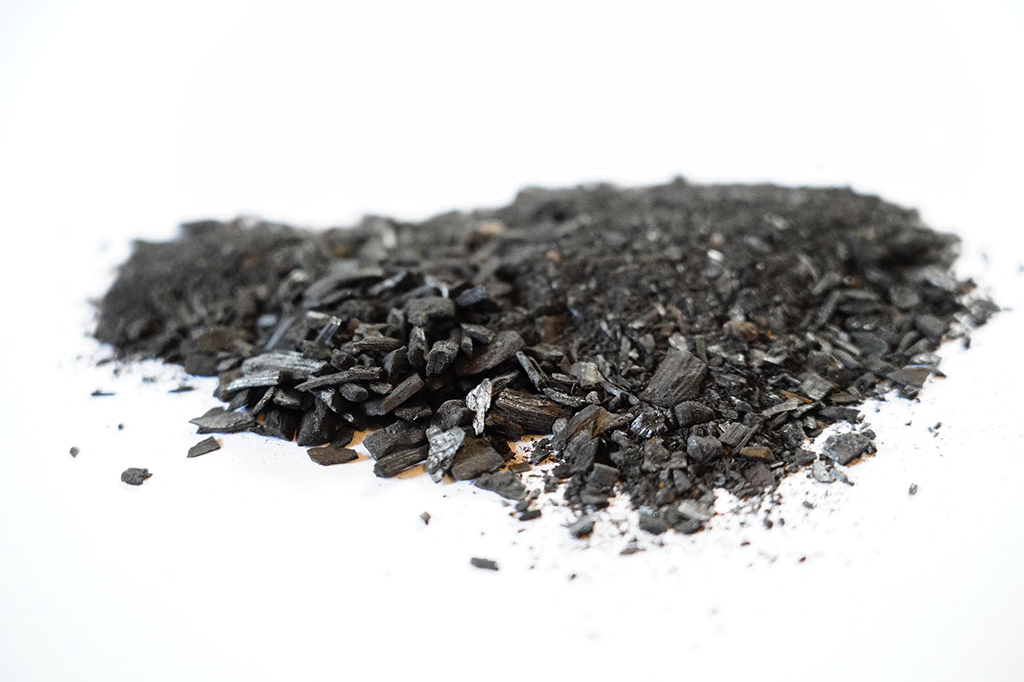
Boosting Highland forests with some funghi fun
An innovative trial to boost reforestation of the Highlands is underway – using a mysterious mushroom mixture set.
Trees for Life will harness the power of local mushrooms to boost reforestation at its Dundreggan Conservation Estate in Glenmoriston near Loch Ness.
The conservation charity’s experts and volunteers are to introduce a special mix of spores collected from mushrooms on the Highland estate when planting native trees on the hills and when growing seedlings in Dundreggan’s tree nursery during this spring.
A pinch of the black granules containing the spores will be added to the planting holes of 20,000 trees in one section of the estate, and will also be applied to a selection of seedlings.
The results of this trial will be monitored to see if treating selected trees and seedlings in this way improves their growth and decreases the need for fertiliser application. It is hoped the trees will have greater resistance to drought and heat, and protection against pests.
Doug Gilbert, Trees for Life’s operations manager at Dundreggan, said: ‘In tough, windswept environments such as those where we plant, newly planted trees need all the help they can get – especially in their early years. This magical mushroom mixture could speed up the return of the Caledonian Forest and its wildlife.’
Mycorrhizal fungi live underground on tree roots in a mutually beneficial relationship that has evolved over 400 million years. Many plants cannot survive without the fungi. In the autumn, some of these fungi form fruiting bodies, or mushrooms, above the ground.
The trees provide sugars for the fungi and in return, the fungi’s powerful enzymes break down and release nutrients such as phosphorus and iron which helps feed the trees. Young trees inoculated with mycorrhizal fungi suffer much less from heat stress, drought and the shock of planting.

Trees for Life’s mysterious mushroom mixture
Natural forest soils are full of these important fungi. But in very deforested areas such as the Highlands, forests still containing mushrooms are rare, small or fragmented, and are often separated by huge swathes of farmland and moorland. This means it can take years for fungi spores to land in the right place by newly planted trees – by which time the trees may be stunted or dead.
Last autumn, the first batch of a new mycorrhizal fungi treatment was made containing 59 species collected from the old-growth forests at Dundreggan by expert Jacob Whitson. Commercially available mycorrhizal treatments for trees are usually made from only a few mushroom species that may not be adapted to conditions in Scotland.
Jacob, who runs Chaos Fungorum, a business supplying native mycorrhizal mixes for trees, said: ‘Mycorrhizal fungi are one of our greatest allies for reforesting degraded landscapes – but they have been lost from soils because of issues including deforestation and overgrazing. By reintroducing them we can help trees.’
Trees for Life will now begin using the spore-laden granules during its popular volunteer Conservation Weeks running this spring. During these volunteering weeks, participants plant some 130,000 trees a year at Dundreggan, and also grow more than 60,000 trees a year in the estate’s tree nursery.
Trees for Life’s award-winning restoration of the Caledonian Forest also includes taking action for the return of rare woodland wildlife and plants, and carrying out innovative scientific research and education programmes. To find out more, see www.treesforlife.org.uk.
TAGS

